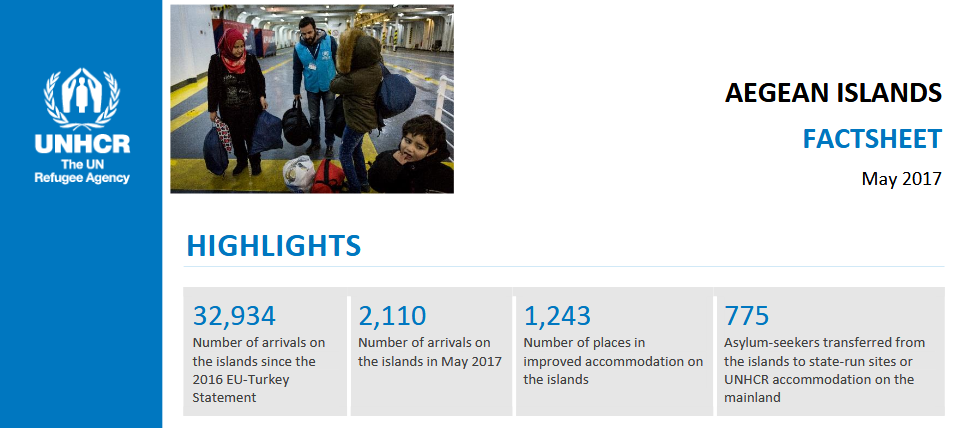The Aegean islands have been at the forefront of the 2015/2016 European Refugee Emergency with over 1 million people arriving in total, the vast majority from refugee producing countries. Before 20 March 2016, the population was transient, with arrivalsremaining on the islands for a limited time, sometimes hours or a few days, before continuingtheir journey.The situation changed after the closure of the so-called ‘Balkans route’ and the implementation of the Joint EU-Turkey Statement of 18 March 2016. Arrivals decreased significantly, the length of stay on the island increased, and the needs of the refugee and migrant populations on the islands changed,especially for people and families with specific needs.
The Greek authorities estimated some 62,193 refugees and migrants to be in Greece at the end of May, of whom, 48,185 on the mainland and 14,008 on the Aegean islands (Source: KEPOM). There were an estimated 2,110 sea arrivals on the Aegean islands, a decrease from April’s 1,156 sea arrivals (Hellenic Police). UNHCR has its own estimates for assistance delivery purposes which indicate lower figures and have been shared with the Government. Some 1,243 places in urban facilities are run by UNHCR and funded by the European Commission. The Greek government, supported by UNHCR and the broader humanitarian community, has made positive steps in improving conditions and services at the Reception and Identification Centres (RICs) on Lesvos, Chios, Samos, Kos, and Leros.

